A leaking toilet is a common household problem that can lead to water damage and waste. However, a leak around the base of the toilet can be particularly concerning as it may indicate a more serious issue with the seal or flange. As a plumbing expert, I have encountered numerous cases where homeowners struggle to fix this problem on their own. In this article, I will provide step-by-step instructions on how to fix a toilet that is leaking around the base and offer practical tips for preventing future leaks.
Before we dive into the specifics of fixing a leaking toilet, it’s important to understand what causes these leaks in the first place. Generally, a leak around the base of a toilet is caused by either a broken wax ring or damaged flange. The wax ring sits between the toilet and the flange (the circular fitting that connects the toilet to the drainpipe), creating a watertight seal. If this ring breaks or becomes worn out over time, water can seep through and cause leaks at the base of your toilet. On the other hand, if your flange is damaged or improperly installed, it can also cause leaks around your toilet. Understanding these common causes will help you diagnose and fix your leaking toilet more effectively.
Common Causes Of Toilet Leaks
Toilet leaks around the base are a common problem encountered by homeowners. There are several causes for this issue, which can range from minor to major plumbing problems. Identifying the underlying cause of the leak is crucial to prevent further damage and ensure that it’s fixed properly.
One of the most common causes of toilet leaks is a damaged wax ring seal. This seal sits between the bottom of the toilet and the floor, providing a water-tight connection. Over time, this seal can become worn out or damaged due to age or improper installation, causing water to seep out from around the base of the toilet. To avoid this issue, it’s important to replace your wax ring every few years or whenever you notice signs of wear and tear.
Another potential cause of toilet leaks is loose bolts or screws that secure the toilet to the floor. If these bolts come loose or break, they can create gaps between the toilet and flange that allow water to escape around the base. Tightening these bolts regularly is essential in preventing this issue. Additionally, using a waterproof caulk around the base of your toilet can provide added protection against leaks caused by loose bolts or screws.
To avoid making common mistakes when trying to fix a leaking toilet yourself, it’s important to identify what may be causing your specific leak before attempting any repairs. Failure to do so could result in further damage and costly repairs down the line. By being proactive in identifying and addressing potential issues early on, you can save yourself time and money in preventing future leaks from occurring.
Moving forward with fixing a leaking toilet requires obtaining necessary tools and equipment first, such as a new wax ring seal or adjustable wrenches for tightening bolts.
Tools You’ll Need To Fix A Leaking Toilet
After identifying the common causes of toilet leaks, it’s time to know what tools you need to fix a leaking toilet. One essential tool that you’ll need is sealant. There are different types of sealants available in the market, such as silicone and plumber’s putty. However, before choosing one, make sure that it is compatible with your toilet and won’t cause any damage.
Another crucial item you should have is proper safety equipment. Fixing a leaking toilet may seem like a simple task, but accidents can happen anytime. Therefore, it’s essential to wear protective gear like gloves and goggles to prevent injuries while working on your toilet.
Now that you have the necessary tools let’s proceed with fixing your leaking toilet. But before we begin, make sure to shut off the water supply first. Turning off the water supply will prevent water from flowing while you’re working on your toilet. You can find the valve near the base of the toilet or at the main water supply line for your house.
Shutting Off The Water Supply
Ironically, one of the most important steps in fixing a leaking toilet is not actually related to the toilet itself. Rather, it involves locating and shutting off the water supply. Without doing so, any repair work will be futile, as water will continue to flow into the tank and cause further leakage. Therefore, it is crucial to take this step before proceeding with any other repairs.
To locate the shut off valve, start by looking near the base of the toilet. In many cases, it will be located on the wall behind the toilet or on a nearby pipe. You may need to move aside any objects or furniture that are obstructing your view. Once you have located the valve, turn it clockwise until it stops moving. This will shut off the water supply to your toilet.
It is important to note that some older homes may not have individual shut off valves for each fixture. In this case, you may need to shut off the main water supply for your entire home. This can typically be done at a valve located near your water meter or where your main water line enters your home. While this may seem like a daunting task, remember that taking these precautions can save you time and money in the long run by preventing further damage from occurring.
With the water supply now turned off, you can proceed with emptying the toilet bowl before continuing with repairs.
Emptying The Toilet Bowl
After identifying that your toilet is leaking around the base, the next step is to empty the toilet bowl. Before doing so, ensure that you have cleaning products on hand to sanitize and disinfect the area. It is also important to take safety measures such as wearing gloves and protective eyewear.
To empty the toilet bowl, start by turning off the water supply valve located behind the toilet. This will prevent any water from refilling the bowl while you work on it. Next, flush the toilet once or twice to remove as much water as possible. If there is still water remaining in the bowl, use a plunger or sponge to remove it completely.
After emptying the toilet bowl, it is important to clean and disinfect the area thoroughly using cleaning products. Remember to take safety measures when handling these products and avoid mixing different chemicals together. Once you have cleaned and disinfected the area, allow it to dry completely before proceeding with any further repairs.
- Use a disinfectant specifically designed for toilets
- Wear protective gear such as gloves and goggles
- Follow instructions on cleaning product labels carefully
- Dispose of any used cleaning materials properly
With an emptied and sanitized toilet bowl, you can now move on to removing the toilet from its flange.
Removing The Toilet From The Flange
- When attempting to remove a toilet from the flange, it is important to first gather necessary supplies, including a wrench or adjustable wrench, a putty knife, and a plumber’s putty.
- Once supplies have been gathered, the water supply to the toilet should be turned off.
- The next step is to loosen the bolts that secure the toilet to the flange.
- This can be done by using the wrench to loosen the nuts at the base of the toilet.
- In some cases, an adjustable wrench may be necessary to access the nuts.
- Care should be taken when loosening the bolts, as the toilet may become unstable with the bolts partially removed.
Gather Supplies
To properly remove a toilet from the flange, it is crucial to gather all the necessary supplies beforehand. This will ensure that the process goes smoothly and efficiently. First on the shopping list should be a new wax ring, as this will replace the old one that has likely worn out and caused the leak. Additionally, a pair of gloves, a bucket, a sponge or rag, and an adjustable wrench are necessary tools for disassembling the toilet.
Preparation steps are also important before removing the toilet from the flange. Turn off the water supply to prevent any further leaks or spills. Then flush the toilet several times to empty out as much water as possible from both the tank and bowl. Afterward, use a sponge or rag to soak up any remaining water in both areas. The final step in preparation is to disconnect any bolts securing the toilet to its base with an adjustable wrench.
By gathering all necessary supplies and properly preparing for removing a toilet from its flange, anyone can tackle this task with ease. With a little patience and attention to detail, even those without plumbing expertise can successfully complete this repair job themselves. Remember not to rush through any of these steps in order to avoid causing further damage or complications with your plumbing system.
Turn Off Water Supply
Before removing a toilet from its flange, it is essential to turn off the water supply. This step prevents any leaks or spills that may occur during the repair process. To do this, locate the shut-off valve typically located behind the toilet’s base or near the floor. Turn the valve clockwise until it stops to shut off the water supply. Afterward, flush the toilet several times to empty out as much water as possible from both the tank and bowl.
Checking for leaks is another important step before turning off the water supply. Inspect all pipes and connections for any signs of damage or wear that could cause a leak. If you notice any issues, make sure to repair them before proceeding with removing the toilet. Once you have verified that there are no leaks present, proceed with turning off the water supply.
After turning off the water supply, reattaching it is necessary once you have finished repairing your toilet. Simply turn on the shut-off valve counterclockwise until it fully opens and allows water flow back into your plumbing system. Then check for any leaks again by running some water into your repaired toilet and inspecting all connections once more. Remember to follow these steps carefully to ensure a successful removal of your toilet from its flange without causing further damage or complications with your plumbing system.
Loosen Bolts
To remove the toilet from its flange, the next crucial step is to loosen the bolts that secure it to the floor. Typically, there are two bolts located at the base of the toilet that attach it to the flange. These bolts are often covered by plastic caps or decorative covers that need to be removed first. Once you have located and exposed these bolts, use a wrench to turn them counterclockwise until they are loose enough to be unscrewed by hand.
It is essential to note that before loosening the bolts, you should carefully inspect them for any signs of wear or damage. If they appear rusted or corroded, it may be necessary to replace them entirely. Additionally, if your toilet has been uneven or wobbly due to loose or tightening bolts, now is an excellent opportunity to adjust its level by tightening them uniformly once reinstalled.
After loosening both bolts, lift up on the toilet bowl gently and wiggle it side-to-side until it comes free from its flange. It may take some effort as there will likely be some residual suction holding it in place. Be sure not to lift too quickly or forcefully as this could cause damage to your plumbing system. With proper care and attention, removing your toilet should be a straightforward process that can easily be accomplished with just a few basic tools and some knowledge of plumbing techniques.
Inspecting The Wax Ring
As they say, the wax ring is the unsung hero of a properly functioning toilet. It’s a circular piece made of wax that goes between the base of your toilet and the flange on the floor. Its purpose is to create a tight seal that prevents water from leaking out from under your toilet.
Inspecting the wax ring is an essential step in repairing a toilet that’s leaking around its base. Signs of wax ring damage include water seeping out from around the base, foul odors, and visible wear or cracking on the ring itself. If you detect any of these signs or suspect that there may be other issues with your toilet, it’s best to call in a professional plumber for assistance.
If you’re confident that it’s just a damaged wax ring causing your leaky toilet, you may be able to replace it yourself. But before doing so, make sure you have all necessary tools and materials on hand. You’ll need a new wax ring (preferably with an added flange), gloves, a scraper, and cleaning supplies to remove any old wax or debris around the flange and base of your toilet.
Replacing The Wax Ring
To fix a toilet that’s leaking around the base, replacing the wax ring is often necessary. The wax ring creates a watertight seal between the toilet and the flange beneath it. Over time, this seal can break down or become misaligned, causing leaks. Replacing the wax ring is a relatively simple task that can be completed in just a few steps.
Before beginning the replacement process, gather all necessary tools and materials. These typically include a new wax ring, gloves, a putty knife, and possibly a new set of bolts for securing the toilet to the flange. To start, turn off the water supply to the toilet and drain any remaining water from the tank and bowl. Next, remove any caps covering the bolts at the base of the toilet and use a wrench to loosen and remove them.
When installing the new wax ring, it’s important to take care not to damage it during placement. Avoid pressing down too hard on the ring or twisting it as this can cause it to deform or crack. Additionally, make sure that the flange is clean and free of debris before setting the new wax ring in place. Once in position, carefully lower the toilet onto the flange and press down firmly on both sides to ensure it is properly seated. Tighten bolts evenly on both sides until snug but do not over tighten as this could cause cracking of porcelain at base of toilet.
Common mistakes when replacing a wax ring include failing to properly align or seat the toilet onto the flange after installation, which can result in continued leaks; reusing old bolts instead of using new ones; or over tightening nuts causing damage to porcelain at base of toilet leading to cracks. Alternative solutions may include using an extra thick reinforced wax gasket designed for uneven floors or using two standard thickness gaskets stacked together for better sealing performance.
Maintenance tips for preventing future leaks include regularly checking bolts for tightness; inspecting flush valve for proper seating; and replacing wax ring every 5-7 years or when leaks occur. In the next section, we will discuss how to check the flange for damage or misalignment that may contribute to toilet leaks.
Checking The Flange
- An inspection of the flange should be the first step when attempting to fix a toilet that is leaking around the base.
- It may be necessary to replace the flange if it is corroded or damaged beyond repair.
- Any corrosion present on the flange should be carefully removed before replacing or repairing it.
- The existing flange should be tightened using a wrench if it is loose.
- If the flange is cracked, it should be repaired using a flange repair kit.
- The wax ring should be replaced if the flange is heavily corroded or damaged.
Inspecting The Flange
When it comes to fixing a toilet that’s leaking around the base, one of the first things you should check is the flange. The flange is a round piece of plastic or metal that connects the toilet to the drainpipe and helps create a watertight seal. If the flange is damaged or misaligned, water can leak out around the base of the toilet. Checking alignment is an important step in inspecting the flange. To do this, you’ll need to remove the toilet and examine the area where it sits on top of the flange.
If you notice that the flange is damaged or not aligned properly, there are several repair options available. One option is to replace the entire flange with a new one. This can be a somewhat complicated process and may require some plumbing expertise. Another option is to use a repair kit specifically designed for fixing damaged or misaligned flanges. These kits typically include a metal ring that fits over the existing flange and creates a new, secure connection between the toilet and drainpipe.
When inspecting your toilet’s flange, it’s important to keep in mind that even small issues can lead to big problems down the line. A leaking toilet can cause damage to your floors and walls, as well as increase your water bill. By checking alignment and exploring your repair options, you can ensure that your toilet remains in good working order for years to come.
Replacing The Flange
When checking the flange of a leaking toilet, it is essential to determine whether the flange requires replacement. The flange is responsible for connecting the toilet to the drainpipe and creating a watertight seal. Replacing the flange can be an effective solution for fixing any misalignment or damage that may cause water leaks around the base. However, before deciding on a flange replacement, it is necessary to consider some factors such as cost-effective repair options and tips.
Flange replacement tips are crucial when attempting to replace a damaged or misaligned flange. It involves removing the existing flange and installing a new one in its place, which can be somewhat complicated and require plumbing expertise. Therefore, it is recommended to hire a professional plumber who can ensure proper installation of the new flange. Additionally, using repair kits specifically designed for fixing damaged or misaligned flanges can provide an alternative solution that may be less expensive than replacing the entire flange.
Cost-effective flange repair options are available for those who want to avoid spending money on replacing their toilets’ entire flanges. Repair kits are one option that provides an affordable way of fixing minor damages and misalignments without having to replace the whole unit. Another cost-effective way of repairing a faulty flange is by using silicone caulking around its base to create a watertight seal. However, it is crucial to note that these options may not work effectively in cases where significant damage has occurred.
Therefore, checking your toilet’s flange regularly and inspecting it thoroughly when you notice any signs of leaks can help you identify any damages early enough before they become severe problems. By considering different repair options such as using repair kits or hiring professional plumbers for complete replacements, you can ensure your toilet remains in good working order without having to spend too much money on repairs or replacements in the future.
Repairing The Flange
When checking the flange of a leaking toilet, it is essential to identify any damages early enough before they become severe problems. Repairing the flange can be an effective solution for fixing minor damages and misalignments without having to replace the entire unit. However, before attempting any repairs, it is crucial to clean and lubricate the flange bolts to prevent damage during the process.
Cleaning the flange involves removing any debris or dirt that may have accumulated around its base. This step is crucial as it ensures that the new seal created by repairing or replacing the flange will be watertight. Additionally, cleaning the flange helps to identify any damages or misalignments that may require repair or replacement. After cleaning, lubricating the flange bolts helps to ease their removal during repairs and prevent damage caused by rust or corrosion.
When repairing a faulty flange, using repair kits specifically designed for fixing minor damages and misalignments can provide an affordable way of fixing the problem without having to replace the whole unit. Additionally, silicone caulking can be used around its base to create a watertight seal. However, it is crucial to note that these options may not work effectively in cases where significant damage has occurred. Therefore, hiring professional plumbers for complete replacements may be necessary in such situations. By following these tips and regularly checking your toilet’s flange, you can ensure your toilet remains in good working order without having to spend too much money on repairs or replacements in the future.
Repairing A Damaged Flange
After checking the flange for damage, the next step is to repair it if necessary. Flange repair techniques can vary depending on the extent of the damage. If the flange is cracked or broken, it may need to be replaced entirely. However, if there are only small cracks or chips, they can often be repaired with a bonding agent or epoxy.
Alternative fixes for damaged flanges include using a wax ring with an extender kit to create a better seal between the toilet and the flange. Another option is to use a flange repair kit that includes a new bracket and bolts to secure the toilet in place. It is important to note that these alternative fixes should only be used as temporary solutions until the flange can be properly repaired.
Before reinstalling the toilet, make sure that any repairs or replacements have been completed and that the flange is fully secured in place. Once this has been done, carefully lower the toilet onto the flange and align it with the bolts. Tighten nuts onto each bolt until they are snug, being careful not to over-tighten them as this can crack the porcelain base of the toilet. Finally, connect water supply lines and turn on water to ensure proper functioning of the toilet.
Transition into subsequent section: Now that we have repaired or replaced any damaged parts, let’s move onto reinstalling your toilet securely in its proper place.
Reinstalling The Toilet
- Before beginning the process of reinstalling the toilet, it is important to turn off the water to the toilet at the shut-off valve, and then flush the toilet to empty the tank.
- The next step is to disconnect the water supply from the toilet, and then remove the caps from the bolts and unscrew them from the floor.
- Care should then be taken to properly lift and remove the old toilet.
- The new toilet should then be installed by placing the wax ring around the toilet’s base and pressing the toilet into the floor.
- The bolts should then be secured, and the nut tightened snugly, and the water supply connected to the inlet of the toilet.
- Finally, the water should be turned on and tested for any leaks.
Preparing The Toilet
When it comes to fixing a leaking toilet, the first step is to prepare the toilet for reinstallation. This involves turning off the water supply to the toilet and removing any remaining water from the bowl and tank. Before proceeding, it is important to take safety precautions such as wearing gloves and eye protection.
To properly clean the area around the base of the toilet, there are several cleaning methods that can be used. One option is to use a disinfectant cleaner along with a scrub brush or sponge to remove any dirt or grime buildup. Another method is to use a mixture of baking soda and vinegar, which can help break down any stubborn stains. It is important to thoroughly clean around the entire base of the toilet as this will ensure a proper seal when reinstalling.
Once the cleaning process is complete, it’s time to reinstall the toilet. This involves placing a new wax ring around the flange and carefully lowering the toilet back onto it while ensuring it is level. After reattaching all bolts and connections, turn on the water supply and check for any leaks. By following these steps, you can fix a leaking toilet at its base and prevent further damage or potential hazards in your home.
Removing The Old Toilet
Before reinstalling the toilet, it is necessary to remove the old one. This process requires proper tools and safety precautions. To begin, turn off the water supply and flush the toilet to empty as much water as possible from the tank and bowl. Then, use a wrench to disconnect the water supply line and unscrew the nuts that hold the toilet in place.
Once all bolts and connections have been removed, carefully lift the toilet up and away from its flange. It is crucial to dispose of the old toilet properly, either by contacting local sanitation services or taking it to a designated landfill for recycling. After removing the old wax ring from around the flange, thoroughly clean any remnants of wax or debris from both surfaces before proceeding with installing a new wax ring.
Removing an old toilet can be a messy and potentially hazardous task without proper safety precautions and tools. It is important to wear gloves and eye protection during this process to avoid injury or exposure to harmful bacteria. By disposing of the old toilet properly and cleaning both surfaces thoroughly before installing a new wax ring, you can ensure a safe and effective reinstallation of your toilet system.
Installing The New Toilet
After successfully removing the old toilet, the next step is to install a new one. Installing a new toilet requires proper alignment and caulking of the base. Before placing the new toilet onto the flange, inspect it for any cracks or damages that may have occurred during transportation or handling. Proper alignment is important to ensure that the bolts fit perfectly into their slots.
Once the new toilet is in place, it’s time to caulk its base. This will help prevent any water leakage from underneath the toilet and also give it a neat appearance. First, apply a continuous bead of caulk around the entire base of the toilet. Then, smooth out the caulk with your finger or a caulking tool to make sure it’s evenly distributed and there are no gaps.
After caulking, connect the water supply line and turn on the water valve. Allow enough time for the tank to fill up before flushing it several times to check for any leaks or issues with proper alignment. By following these steps carefully and taking necessary safety precautions, you can successfully reinstall your toilet system for safe and effective use once again.
Testing For Leaks
There’s nothing more frustrating than a leaking toilet. Not only does it waste water and money, but it can also cause significant damage to your home. Testing for leaks is an essential step in fixing the problem.
The first thing you need to do is locate the source of the leak. Start by checking the toilet bolts that hold the bowl to the floor. If they’re loose, tighten them with a wrench. If that doesn’t solve the problem, try replacing the wax ring that seals the toilet to the drainpipe. In some cases, cracks in the porcelain may be causing the leak, requiring you to replace the entire toilet.
The importance of maintenance cannot be overstated when it comes to preventing leaks around your toilet’s base. Regularly inspecting and tightening bolts, replacing wax rings every few years, and cleaning any debris around your toilet can go a long way in avoiding future leaks. If you’re not comfortable with DIY alternatives or are unsure about diagnosing your leak’s source, don’t hesitate to contact a plumbing professional who can help you fix your issue and provide maintenance tips for preventing future problems.
Preventing Future Leaks
Now that you’ve fixed your leaking toilet, it’s important to take steps to prevent future leaks from occurring. By following some basic maintenance tips, you can ensure that your toilet remains leak-free for years to come.
Firstly, make sure to clean the area around the base of the toilet regularly. This will help prevent any build-up of dirt or debris that could cause a leak in the future. Use a non-abrasive cleaner and a soft cloth or sponge to gently wipe down the outside of the toilet.
Secondly, check the bolts and nuts that hold the toilet in place every six months or so. Over time, these can become loose and cause water to seep out around the base of the toilet. If you notice any looseness, simply tighten them up with a wrench.
Lastly, be mindful of what you flush down your toilet. Flushing items such as wet wipes, feminine hygiene products, or paper towels can cause blockages in your pipes which can lead to leaks. Stick to flushing only human waste and toilet paper.
By following these simple maintenance tips, you can greatly reduce your chances of experiencing another leaking toilet mishap in the future.
In order to ensure that your home’s plumbing system is functioning properly and efficiently, it’s important to know when it’s time to call in a professional plumber. While preventative maintenance can do wonders for preventing leaks and other issues, there may come a time when more serious repairs are needed. In order to avoid further damage or costly repairs down the line, don’t hesitate to call in an expert if you notice anything unusual with your plumbing system.
When To Call A Professional
So, you’ve tried your hand at fixing a leaking toilet base, but the problem persists. It’s natural to feel frustrated and defeated by this point. Perhaps it’s time to call in the professionals. After all, there’s only so much a DIYer can do without specialized knowledge and equipment.
Hiring plumbers may seem like an unnecessary expense, but in many cases, it can save you time and money in the long run. Not only do they have the expertise to diagnose and repair complex issues, but they also have access to high-quality replacement parts that may not be available at your local hardware store. Additionally, if safety concerns arise during the repair process, such as gas leaks or electrical hazards, professional help is essential.
When deciding whether to attempt a fix yourself or seek expert opinion, consider factors such as cost analysis and time management. While repairing a toilet yourself may seem cheaper upfront, it could end up costing more down the line if mistakes are made or further damage is caused. Similarly, if you’re short on time or lack experience with plumbing repairs, hiring a professional may be the more efficient option. Ultimately, finding reliable contractors who prioritize safety and quality workmanship should be your top priority when seeking professional help.
Transition: Now that we’ve explored when it’s appropriate to call in professional help for toilet repairs let’s move on to troubleshooting other common toilet problems.
Troubleshooting Other Toilet Problems
When to Call a Professional, we discussed situations where it may be necessary to seek the help of a plumbing expert. However, there are times when you can troubleshoot and fix toilet problems on your own. One common issue is a leaking toilet around its base. This problem can be caused by a variety of factors, including a faulty wax ring, loose bolts, or even cracks in the porcelain.
To fix a leaking toilet at the base, you’ll need to start by turning off the water supply and draining the tank and bowl. Once you’ve done this, inspect the wax ring that seals the base of the toilet to the drainpipe. If it appears damaged or worn out, replace it with a new one. Next, check if the bolts securing the toilet to the floor are loose; if so, tighten them using an adjustable wrench. If neither of these solutions works, then there may be cracks in the porcelain that require professional attention.
While fixing a leaking toilet at its base is something that most homeowners can do themselves with some basic tools and knowledge, other issues may require more expertise. For example, toilet clogs or flushing issues can sometimes be resolved with a plunger or snake tool but could also indicate more serious plumbing problems like blockages in your sewer line or septic system. In these cases, it’s best to call in an expert who can diagnose and repair any underlying issues.
- A leaking toilet can cause water damage and lead to mold growth.
- Fixing a leaky toilet on your own can save you money on repair costs.
- Ignoring leaks around your toilet’s base can result in higher water bills.
- Toilet clogs can cause unpleasant odors and unsanitary conditions.
- Flushing issues may indicate problems with your plumbing system beyond just your toilet.
In conclusion, fixing a leaking toilet around its base is something that many homeowners can do themselves by inspecting and replacing parts as needed. However, if the issue persists or other problems arise like toilet clogs or flushing issues, it’s best to call in a professional plumber who can diagnose and fix any underlying issues. By taking care of your toilet and addressing any problems promptly, you can avoid more significant plumbing issues down the line and ensure that your home’s plumbing system functions smoothly.
Conclusion
It is important to understand that leaks around the base of a toilet can be quite frustrating for homeowners. While euphemistically speaking, it can be an unpleasant experience, there are cost-effective solutions available to prevent such occurrences in the future.
To prevent leaks from happening, one should ensure that the wax ring situated between the toilet and flange is installed properly. A poorly installed wax ring may lead to loosening of the bolts and cause leaks. Another way to prevent leaks is by checking for any cracks in the porcelain or rust on the metal parts of your toilet. These simple checks can go a long way in ensuring your toilet remains leak-free.
In conclusion, prevention is always better than cure when it comes to leaks around the base of a toilet. By using cost-effective solutions like proper installation of wax rings and regular maintenance checks, homeowners can avoid costly repairs down the line. Remember, a little bit of vigilance and care can save you from a lot of trouble in the long run!
Conclusion
Toilet leaks can be frustrating and messy, but with the right tools and knowledge, you can fix the problem. Common causes of leaks around the base include a damaged wax ring or loose bolts. Shut off the water supply and empty the toilet bowl before removing it from the flange to inspect and replace any damaged parts. To prevent future leaks, ensure that all connections are secure and consider using a reinforced wax ring.
If you are not comfortable with DIY repairs or encounter other toilet problems such as clogs or weak flushes, it may be best to call a professional plumber. Remember to troubleshoot any issues promptly to avoid further damage to your plumbing system.
In conclusion, fixing a leaking toilet requires proper tools, techniques, and attention to detail. By following the steps outlined in this guide and seeking professional help when necessary, you can maintain a functional and leak-free toilet in your home. As plumbing experts say, prevention is key to avoiding costly repairs in the future.
Image Credits
- “Toilet Use instructions” by Tobyotter (featured)



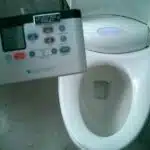


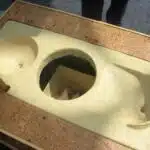


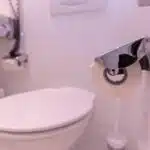


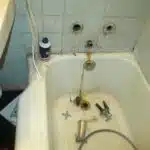




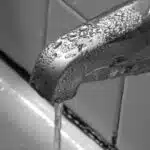






![How To Clean A Wax Warmer 24 [1425] Wax Moth (Galleria mellonella)](https://green-life.blog/wp-content/uploads/2023/05/TlTgCqusrajq-150x150.jpg.webp)


![How To Replace A Bathtub Drain In A Mobile Home 27 2/365 [Bathtub Drain]](https://green-life.blog/wp-content/uploads/2023/05/3ft8KAJsNnjq-150x150.jpg.webp)

